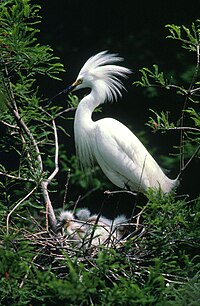Portal:Latin America/Featured picture/2006
Today is April 30, 2024, week number 18.
Weeks in 2006
- Week 23
Portal:Latin America/Featured picture/Week 23, 2006
view -
talk -
history
- Week 24
Portal:Latin America/Featured picture/Week 24, 2006
view -
talk -
history
- Week 25
Portal:Latin America/Featured picture/Week 25, 2006
view -
talk -
history
- Week 26
Portal:Latin America/Featured picture/Week 26, 2006
view -
talk -
history
- Week 27

Tarantulas are long-legged, long-living spiders, whose entire body is covered with short glittery hairs called
The body of the tarantula pictured above is approximately 2.5 inches (6.2 cm) long. Despite their often scary appearance and reputation, none of the true tarantulas are deadly spiders (spiders having a strong toxin, dangerous to humans), and this particular kind of tarantula is regarded as especially docile.
In the wild, they will consume almost any kind of arthropod, small lizard, or small rodent that they can overpower and immobilize with their venom.
view -
talk -
history
- Week 28

Machu Picchu (
view - talk - history
- Week 29
Portal:Latin America/Featured picture/Week 29, 2006
view -
talk -
history
- Week 30
Portal:Latin America/Featured picture/Week 30, 2006
view -
talk -
history
- Week 31
Portal:Latin America/Featured picture/Week 31, 2006
view -
talk -
history
- Week 32

The
view -
talk -
history
- Week 33

Rano Raraku is a volcanic crater formed of consolidated ash, or tuff, and located on Easter Island, Chile. It is the quarry in which about 95% of the island's known monolithic sculpture (Moai) were carved.
The sides of Rano Raraku crater are high and steep except on the north and northwest, where they are much lower and gently sloping. The interior contains a freshwater lake bordered by reeds called tortora (Scripus sp.). The reeds, once believed to have been carried to the island by explorers from the South American mainland, are now known to have been naturally introduced some 30,000 years ago.
view -
talk -
history
- Week 34
Portal:Latin America/Featured picture/Week 34, 2006
view -
talk -
history
- Week 35
The Southern Patagonia Ice Field is the third biggest extension of continental ice after the Antarctica and Greenland, located at the Southern Patagonic Andes between Chile and Argentina, and part of the Patagonian Ice Sheet.
It extends from parallels 48º20'S to 51º30' for approximately 350 kilometres, and has an area of 16,800 km², of which 14,200 km² belong to Chile, and 2,600 km² to Argentina.
The ice field was first studied in 1943 by aereal photographies made by the United States' Air Force on request of the Chilean government. Later explorations include the expeditions of Federico Reichert and Alberto de Agostini, but the field remains largely unexplored.
view -
talk -
history
- Week 36
The
Sunflowers are native to the
view - talk - history
- Week 37
Portal:Latin America/Featured picture/Week 37, 2006
view -
talk -
history
- Week 38

The
The Prothonotary Warbler is 13 cm long and weighs 12.5 g. It has an olive back with blue-grey wings and tail, yellow underparts, a relatively long pointed bill and black legs. The adult male has a bright orange-yellow head; females and immature birds are duller and have a yellow head.
It breeds in
view - talk - history
- Week 39

The
view -
talk -
history
- Week 40

The Mexican Wolf (Canis lupus baileyi) is the rarest, most genetically distinct
view - talk - history
- Week 41

- Week 42
Portal:Latin America/Featured picture/Week 42, 2006
view -
talk -
history
- Week 43

The
view -
talk -
history
- Week 44
Portal:Latin America/Featured picture/Week 44, 2006
view -
talk -
history
- Week 45

The citrus root weevil (Diaprepes abbreviatus) is a major agricultural pest weevil in several Caribbean countries and the US state of Florida. It is also known as the diaprepes root weevil and the sugarcane rootstock borer weevil. The weevil is found on many plants besides citrus, including sugarcane, tuber-bearing crops such as potatoes, and many ornamental plants.
view -
talk -
history
- Week 46
Portal:Latin America/Featured picture/Week 46, 2006
view -
talk -
history
- Week 47
Portal:Latin America/Featured picture/Week 47, 2006
view -
talk -
history
- Week 48

The
view -
talk -
history
- Week 49
Portal:Latin America/Featured picture/Week 49, 2006
view -
talk -
history
- Week 50
Portal:Latin America/Featured picture/Week 50, 2006
view -
talk -
history
- Week 51
Portal:Latin America/Featured picture/Week 51, 2006
view -
talk -
history
- Week 52
Portal:Latin America/Featured picture/Week 52, 2006
view -
talk -
history
